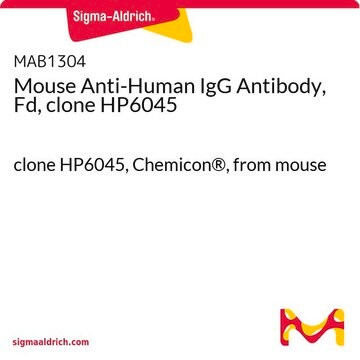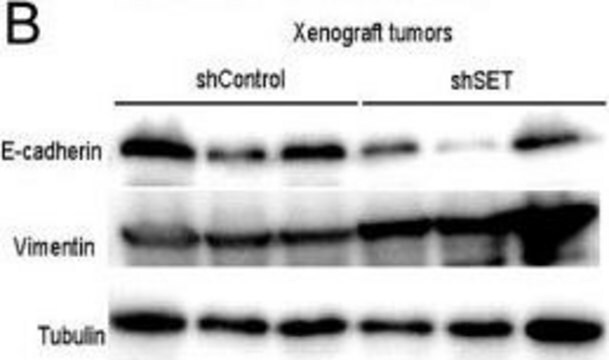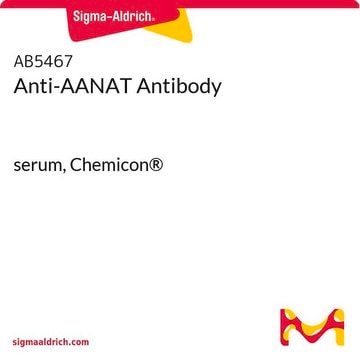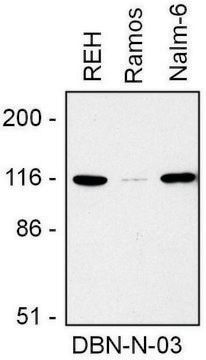It would help prospective buyers if you included a list of research papers where this antibody has been used. For example:
Dart, A. E., Worth, D. C., Muir, G., Chandra, A., Morris, J. D., McKee, C., Verrill, C., Bryant, R. J. and Gordon-Weeks, P. R. (2017) The drebrin/EB3 pathway drives invasive activity in prostate cancer. Oncogene, 36, 4111-4123.
Trivedi, N., Stabley, D. R., Cain, B. et al. (2017) Drebrin-mediated microtubule-actomyosin coupling steers cerebellar granule neuron nucleokinesis and migration pathway selection. Nature Comms, 8, 14484.
Uddin, B., Partscht, P., Chen, N. P. et al. (2019) The human phosphatase CDC14A modulates primary cilium length by regulating centrosomal actin nucleation. EMBO reports, 20(1):e46544.
Poobalasingham, T., Bianco, F., Oozeer, F. and Gordon-Weeks, P. R. (2022) The drebrin/EB3 pathway regulates cytoskeletal dynamics to drive neuritogenesis in embryonic cortical neurons. J. Neurochem., 160, 185-202.
Chen, C., Chu, C. H., Chu, Y. et al. (2022) Neuronal paxillin and drebrin mediate BDNF-induced force transduction and growth cone turning in a soft-tissue-like environment. Cell Reports, 40, 111188.
MABN833
Anti-phospho Drebrin (Ser142), clone 3C14 Antibody
clone 3C14, from mouse
Synonim(y):
Drebrin, Developmentally-regulated brain protein
Wybierz wielkość
Wybierz wielkość
About This Item
Polecane produkty
pochodzenie biologiczne
mouse
Poziom jakości
forma przeciwciała
purified immunoglobulin
rodzaj przeciwciała
primary antibodies
klon
3C14, monoclonal
reaktywność gatunkowa
human, mouse, rat
metody
immunocytochemistry: suitable
inhibition assay: suitable (peptide)
western blot: suitable
izotyp
IgG3κ
numer dostępu NCBI
numer dostępu UniProt
Warunki transportu
wet ice
docelowa modyfikacja potranslacyjna
phosphorylation (pSer142)
informacje o genach
human ... DBN1(1627)
Opis ogólny
Immunogen
Zastosowanie
Neuroscience
Developmental Signaling
Immunocytochemistry Analysis: 20 µg/mL from a representative lot detected phospho Drebrin (Ser142) in HeLa and NIH/3T3 cells.
Peptide Inhibition Analysis: 0.5 µg/mL from a representative lot detected phospho Drebrin (Ser142) in 10 µg of rat neonatal brain tissue lysate.
Immunocytochemistry Analysis: A representative lot detected phospho Drebrin (Ser142) in rat embryonic cortical culture (Prof. Phillip R. Gordon-Weeks, King′s College London).
Jakość
Western Blotting Analysis: 0.5 µg/mL of this antibody detected phospho Drebrin (Ser142) in 10 µg of SH-SY5Y cell lysate.
Opis wartości docelowych
Postać fizyczna
Przechowywanie i stabilność
Inne uwagi
Oświadczenie o zrzeczeniu się odpowiedzialności
Nie możesz znaleźć właściwego produktu?
Wypróbuj nasz Narzędzie selektora produktów.
Kod klasy składowania
12 - Non Combustible Liquids
Klasa zagrożenia wodnego (WGK)
WGK 1
Temperatura zapłonu (°F)
Not applicable
Temperatura zapłonu (°C)
Not applicable
Certyfikaty analizy (CoA)
Poszukaj Certyfikaty analizy (CoA), wpisując numer partii/serii produktów. Numery serii i partii można znaleźć na etykiecie produktu po słowach „seria” lub „partia”.
Masz już ten produkt?
Dokumenty związane z niedawno zakupionymi produktami zostały zamieszczone w Bibliotece dokumentów.
Active Filters
Nasz zespół naukowców ma doświadczenie we wszystkich obszarach badań, w tym w naukach przyrodniczych, materiałoznawstwie, syntezie chemicznej, chromatografii, analityce i wielu innych dziedzinach.
Skontaktuj się z zespołem ds. pomocy technicznej






